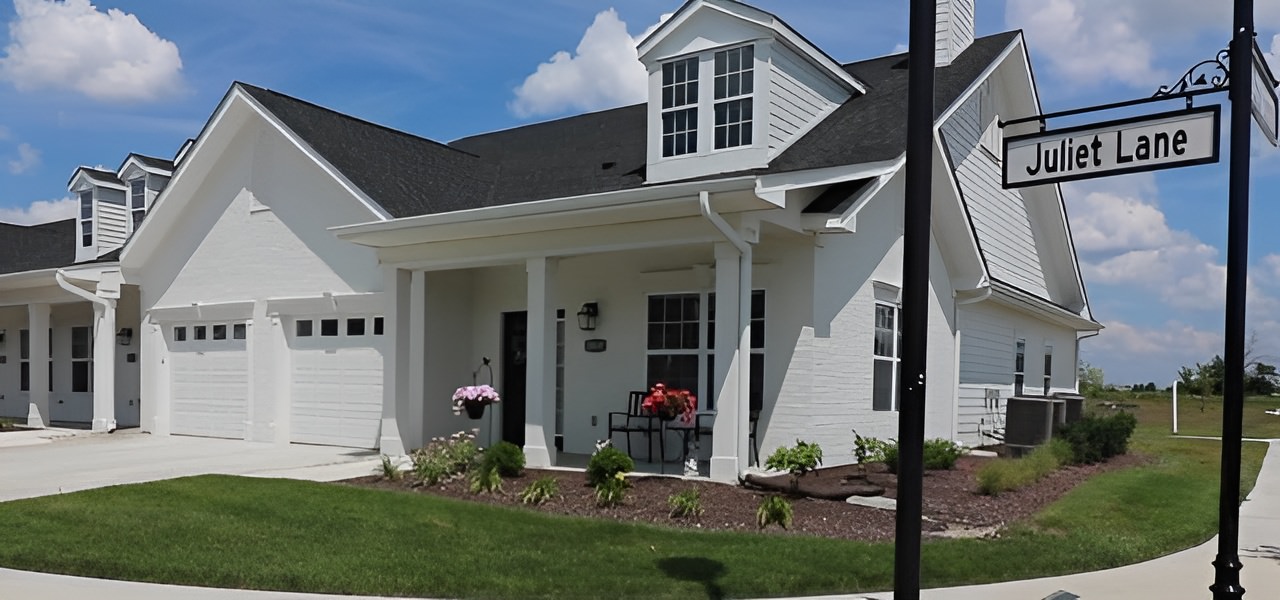Why Renting vs. Buying Just Makes Sense When it Comes to Senior Living

There is no one-size-fits-all solution when it comes to senior living decisions. You and your loved ones are unique humans who have your own opinions, needs, and preferences. Still, everyone’s situation requires a healthy dose of self-awareness and time to consider their financial, social and health requirements.
That’s why when people come to a Traditions community, one of their first questions is often whether they will rent or own. The second question? How much does it cost, and how does it work?
Buy-In Communities
Throughout our lives, we’re taught that building equity is desirable. Ownership affords certain freedoms, especially over time. With buy-in senior living, a resident either buys an apartment, condo, freestanding garden home, or villa outright or transfers their assets to a community’s equity trust. Your residence, as do the decisions and financial responsibilities of owning it belong to you.
You must make a substantial up-front investment before you own your residence. Once you do, you pay monthly maintenance fees, association dues, real estate taxes, and assessments. Renovations usually are at your expense, as are utilities and other services such as snow and trash removal.
Some care is usually available for an additional cost, which can be paid monthly or come from your pre-paid trust (something to confirm in writing). If your level of care exceeds what is available onsite, you may be required to move or make other in-home care arrangements.
Upon departure or death, a family member or your estate is responsible for monthly fees until your home or condo is resold. Resale pricing and profit will depend on an ever-fluctuating market, but whatever you make belongs to you or your family/estate.
Continuing Care Retirement Communities (CCRCs)
Continuing Care Retirement Communities (CCRCs)—another buy-in option—are similar in terms of an upfront investment but require that you qualify for specific financial and medical criteria before moving in. This option includes a substantial entrance fee and an ongoing monthly charge that covers your care regardless of how your medical condition or financial situation changes.
Your investment here is for your present and future peace of mind regarding lifelong care, not to build equity. A Continuing Care Retirement Community (CCRC) covers your full progression of care but does not provide you or your family/estate with equity. Some CCRCs will refund a portion of the up-front entrance investment within a specified period of days, or once they sell the apartment, condo, or freestanding home.
Rental Communities
This is a very popular model for senior living communities because it is the least expensive upfront and, in most cases, over time. The price of your rental also includes many things.
Traditions communities are all rental communities, including independent and assisted living and memory care. We believe in this housing model because it gives more seniors access to beautiful and comfortable living, amenities, and present or future care options.
Rental communities work the same way most rental companies work, with a small refundable deposit and a monthly fee for rent. Residents must give notice (usually 30 days) before terminating their lease. Leases are typically renewed annually, but terms and pricing should be discussed.
Overall, rentals often give you more for your money, with villas and freestanding garden homes including attached garages, gated security, options to paint and choose some design features, home maintenance, yard work, snow and trash removal, utilities and full access to dining, amenities, social activities, and events and transportation.
Assisted living and memory care, rentals include three restaurant meals per day, all utilities, weekly housekeeping, weekly laundry service for bed linens and towels, 24-hour on-site caregivers, emergency response systems, on-site social, religious, recreational, and wellness programs, and activities, and scheduled transportation to medical appointments, outings, and events.
Rentals have some restrictions on the type of large-scale changes you can make to your residence and the ones for which you would be financially responsible. Still, there is usually a good deal of flexibility on improvements.
Rentals typically have a continuum of care available to residents, offering independent living, assisted living, and memory care within one community. This arrangement often allows you to stay in the same villa, garden home, or apartment if you can safely receive new levels of care in place. It also allows you to receive care and assistance from people you know and trust.
We want every senior to find the living option that best meets their needs. Find a Traditions rental community near you, learn more about available options, floor plans, and pricing, and schedule a tour.
Related Articles:
Important Paperwork To Consider As You Transition To Senior Living
Paying For Senior Living: Comparing Monthly Payments To Lump Sum Buy-Ins
